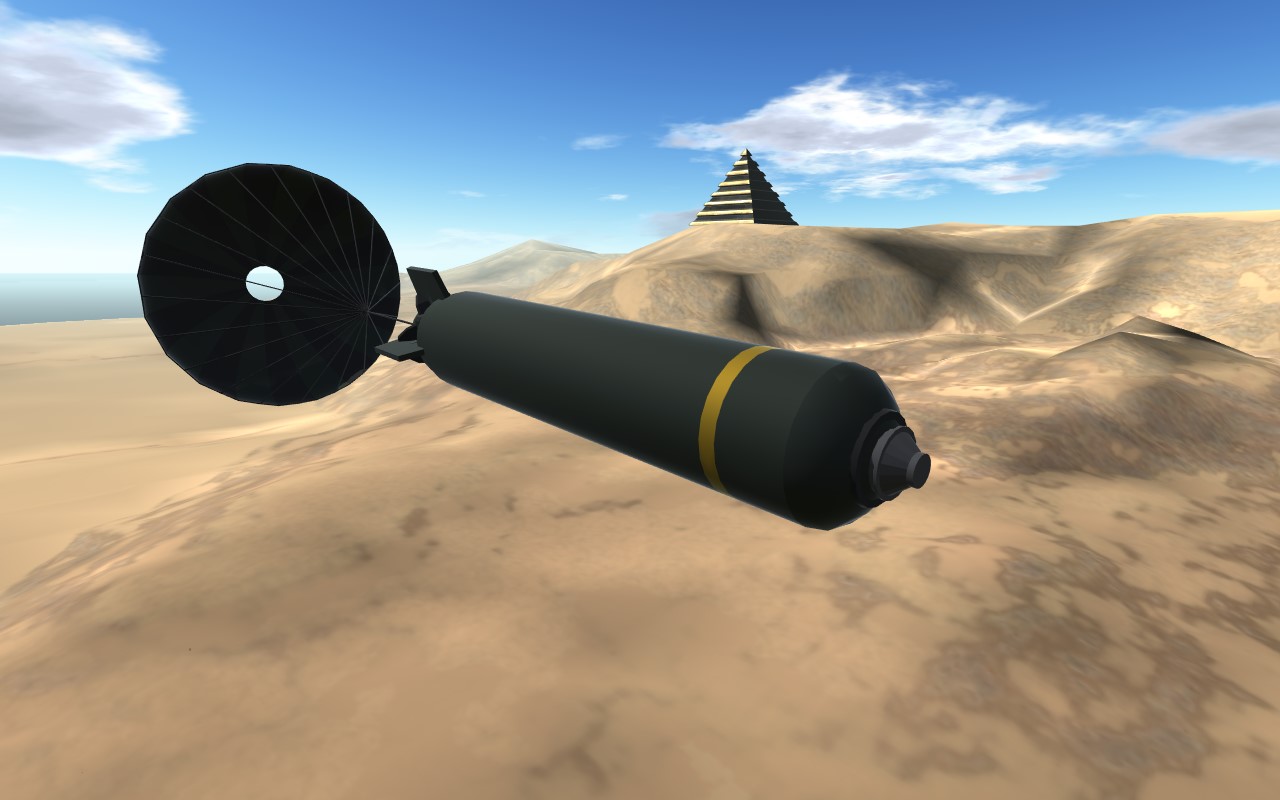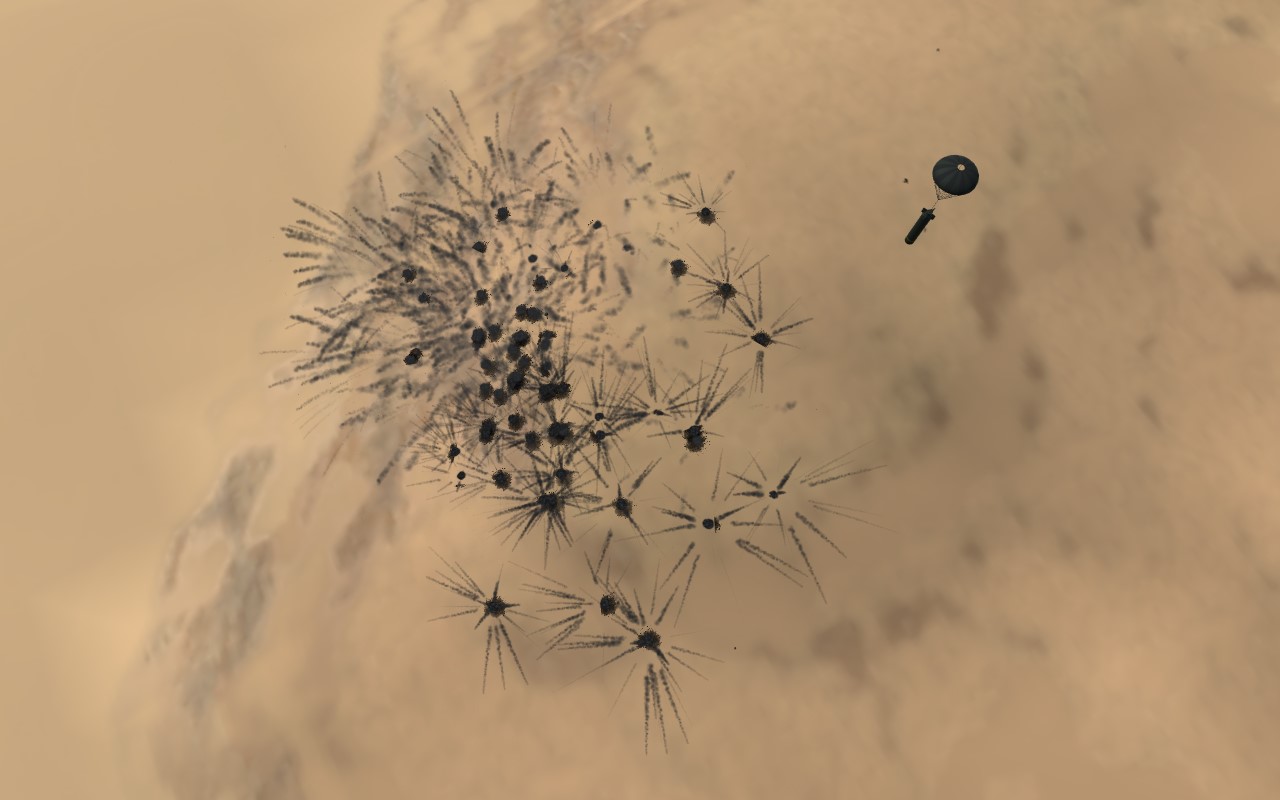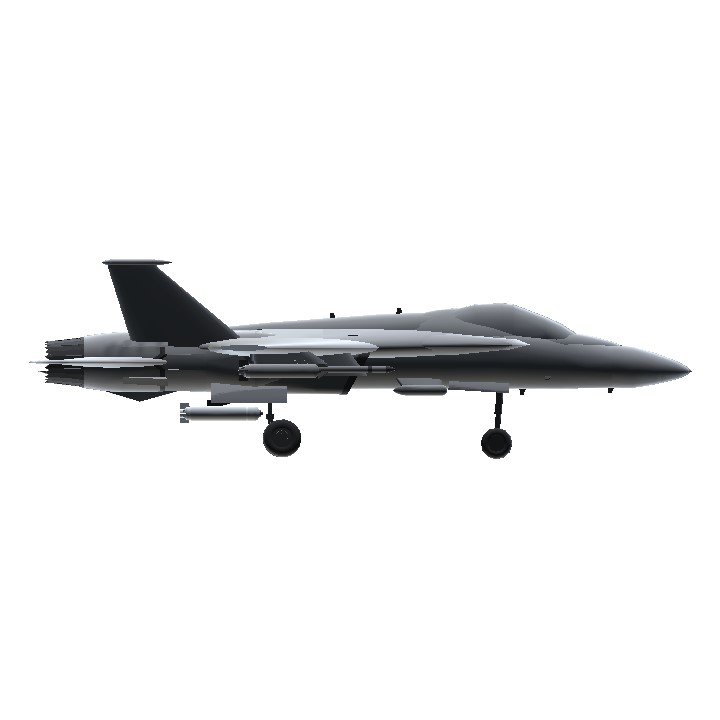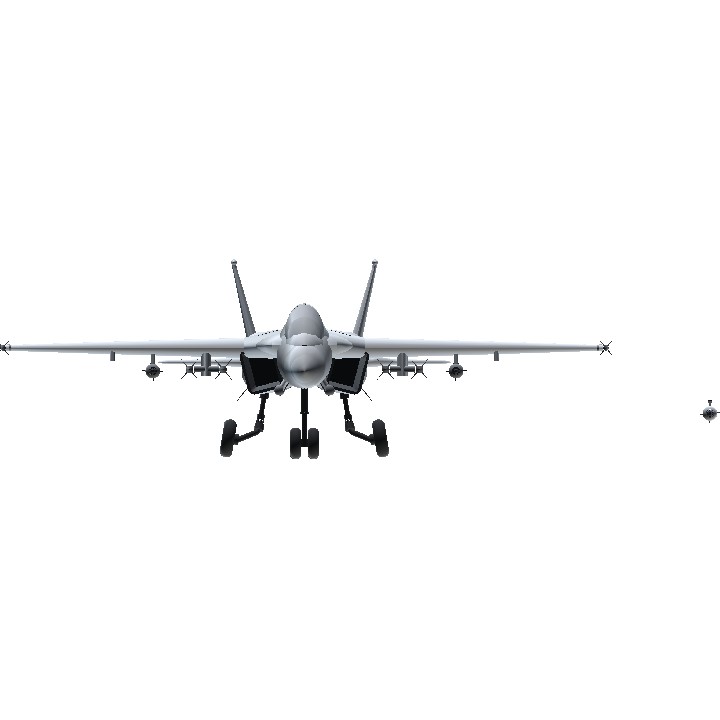Background
The CBU-98 Sensor Fuzed Weapon is a Federation 1,000-pound Free-fall Cluster Bomb. Developed and produced by Voraus Enterprises. The CBU-98 in conjunction with the Wind Corrected Munitions Dispenser guidance tail kit, which converts it to a precision-guided weapon, is designated CBU-106.
The CBU-98 consists of an SUU-67/B tactical munition dispenser that contains 12 BLU-110 submunitions. Each submunition contains four hockey-puck-shaped sensor-fused projectiles called Skeets. These detect target vehicles, such as tanks, armored personnel carriers, trucks and other support vehicles, and fire an explosively-formed penetrator downwards at them.
======
The 48 Skeets scan an area of 500mx200m using infrared (or Electro-optical), and laser sensors, seeking targets by pattern-matching. When a Skeet finds a target it fires an explosively-formed penetrator to destroy it. If a Skeet fails to find a target, it self-destructs 15m above the ground; if this fails, a back-up timer disables the Skeet. These features are intended to avoid later civilian casualties from unexploded munitions, and result in an unexploded-ordnance rate of less than 1%.
As the CBU-98 approaches its designated aim-point, the dispenser skin is severed into three panels by an explosive cutting charge. The slipstream peels away these panels, exposing the 12 BLU-110 submunitions. An airbag ejects the forward six submunitions, then six in the aft bay. Following a preset timeline, the submunitions deploy parachutes so that they are spaced about 30m apart. Then each submunition releases a chute, fires a rocket motor that stops its descent and spins it on its longitudinal axis, and releases Skeets 90 degrees apart, in pairs. Each spinning Skeet makes a coning motion that allows it to scan a circular area on the ground.
The laser sensor detects changes in apparent terrain height such as the contour of a vehicle. At the same time, infrared sensors detect heat signatures, such as those emitted by the engine of a vehicle. When the combination of height contours and heat signatures indicative of a target are detected, the Skeet detonates, firing an explosively-formed penetrator, a kinetic energy penetrator, down into the target at high speed, sufficient to penetrate armor plating and destroy what is protected by it. Even well-armored vehicles such as main battle tanks, while having massive armor protection on the front and sides, are only lightly armored above, and relatively easily penetrated. Each bomb can spread penetrators over an area of 61,000 square meters or more. An attack by this bomb would basically stop an armored convoy moving down a road. A single B-55 high altitude heavy bomber can destroy an entire armored division with these bombs, where in the past dozens of aircraft would have had to drop hundreds of bombs for the same effect.
The CBU-98, or CBU-106 version, is deployed by tactical aircraft from altitudes of 6,100m Above Ground Level at speeds of 810mph.
-Heavily based on the CBU-97 Sensor Fuzed Weapon
https://en.wikipedia.org/wiki/CBU-97SensorFuzed_Weapon
Controls and installation
Movement F/A-81
-Normal Plane Controls
-Throttle Accelerates
Weapons CBU-98
-Do not launch bombs
-AG1 Drops Cluster Bombs (If using advanced targeting, aim a little further ahead of the target)
Installation
-Attach detacher to pylon
-Fine tune it so the detacher isn't visible and bomb is against pylon
Specifications
General Characteristics
- Predecessor Rostov F-51 Angelfire
- Successors 1 airplane(s)
- Created On Mac
- Wingspan 66.7ft (20.3m)
- Length 61.5ft (18.7m)
- Height 18.6ft (5.7m)
- Empty Weight N/A
- Loaded Weight 42,041lbs (19,069kg)
Performance
- Power/Weight Ratio 4.81
- Wing Loading 7.1lbs/ft2 (34.8kg/m2)
- Wing Area 5,896.0ft2 (547.8m2)
- Drag Points 11566
Parts
- Number of Parts 286
- Control Surfaces 6
- Performance Cost 2,915







THIS IS SO DAMN GOOD
wow
@Caden313 Thank you!
I really like your weapons.I use them all the time!